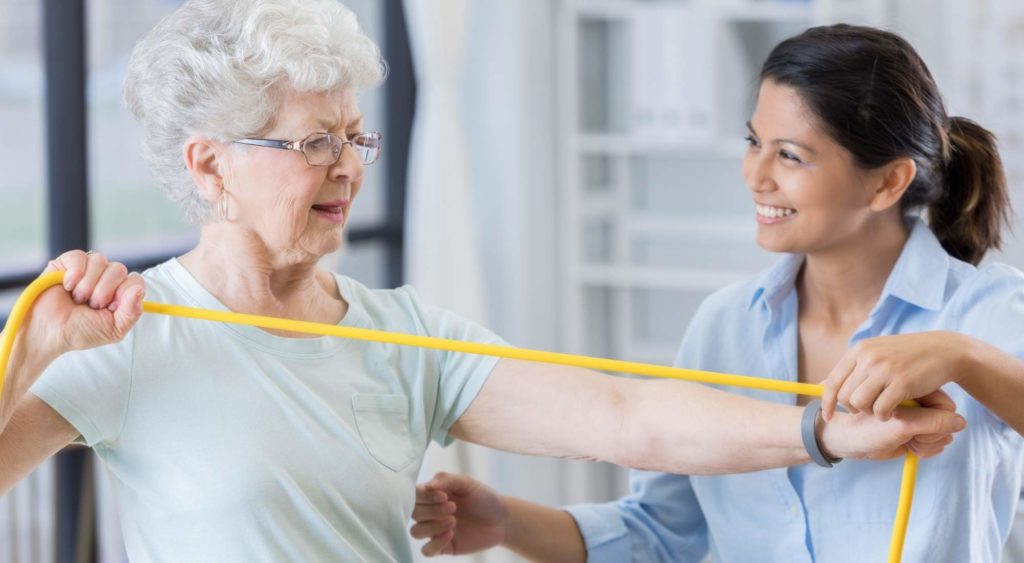Recovering from surgery can be particularly challenging for seniors due to the natural decline in muscle strength, flexibility, and balance of aging. Physical therapy plays a crucial role in the post-surgery recovery process, offering structured, evidence-based approaches that accelerate healing, alleviate pain, and improve overall function. Here’s how physical therapy can support seniors after surgery.
Pain Management through Physical Therapy
Post-surgery pain can be a major obstacle in recovery, especially for seniors. While pain medications are often prescribed, they can come with side effects, such as dizziness or drowsiness, which may increase fall risks. Physical therapy offers non-pharmacological ways to manage pain, helping seniors recover more comfortably and safely.
Manual Therapy for Pain Relief Manual therapy is a hands-on technique used by physical therapists to address post-surgical pain. Physical therapists can alleviate muscle stiffness, reduce swelling, and improve blood circulation by applying gentle pressure and mobilizing soft tissues around the surgical site. This increased circulation aids in delivering essential nutrients and oxygen to the healing tissues, speeding up recovery. For instance, after knee or hip replacement surgery, manual therapy can help break down scar tissue, which may otherwise restrict movement and cause discomfort.
Electrical Stimulation (E-Stim) Electrical stimulation is another effective tool for pain relief in post-surgical recovery. This technique uses electrical impulses to block pain signals sent to the brain, providing temporary relief while healing occurs. E-Stim also promotes muscle activation, preventing muscle atrophy (wasting) after surgery. For seniors who are more vulnerable to muscle loss, this technique helps maintain muscle mass and strength during the early, more passive stages of recovery.
Cold and Heat Therapy Both cold and heat therapies are commonly used to manage post-surgical pain. Cold therapy, applied through ice packs, helps reduce swelling and inflammation by constricting blood vessels, which can lower pain in the immediate aftermath of surgery. Conversely, heat therapy is often introduced in later stages to relax muscles, improve flexibility, and increase blood flow to the surgical site. Combining these therapies can significantly reduce pain, allowing seniors to begin physical therapy exercises more comfortably and with better outcomes.
Restoring Mobility and Function
Post-surgery, seniors often face challenges with movement due to pain, stiffness, or muscle weakness. Physical therapy is designed to gradually restore mobility, flexibility, and function, which are essential for regaining independence.
Range of Motion Exercises In the early stages of recovery, physical therapists focus on gentle range-of-motion (ROM) exercises to prevent joint stiffness and maintain flexibility. These exercises help seniors regain their ability to move the affected joint without excessive strain or pain. For example, passive ROM exercises may be used after shoulder surgery, where the therapist gently moves the arm in different directions to maintain mobility while minimizing pain.
Progressive Strengthening Exercises Once the surgical site has begun to heal, physical therapists introduce strengthening exercises to build muscle mass and support the repaired structures. For seniors recovering from surgery, such as knee replacement, quadriceps and hamstring exercises are critical for supporting the knee joint and ensuring stability during walking. Strengthening surrounding muscles not only aids in recovery but also prevents future complications by enhancing joint support and reducing the risk of re-injury.
Gait and Balance Training For seniors recovering from surgeries that affect mobility, such as hip or spinal surgeries, gait, and balance training are essential components of physical therapy. These exercises help seniors relearn proper walking patterns, improve posture, and regain stability. Physical therapists use tools like parallel bars and harness systems to safely guide seniors through weight-bearing exercises, which are critical for preventing falls during recovery. This training helps restore confidence in walking and performing daily activities.
Preventing Post-Surgical Complications
Physical therapy not only aids in recovery but also plays a significant role in preventing common post-surgical complications such as infections, blood clots, or muscle atrophy.
Deep Breathing Exercises and Cardiovascular Endurance
After surgeries, especially those involving the chest or abdomen, lung complications are likely due to reduced activity. Physical therapists incorporate deep breathing exercises to improve lung capacity and oxygen exchange, which helps prevent pneumonia or other respiratory issues. Additionally, light cardiovascular exercises, such as walking or stationary cycling, are gradually introduced to keep the blood flowing, preventing conditions like deep vein thrombosis (DVT), a dangerous blood clot that can form due to inactivity.
Edema Management
Swelling, or edema, is common after surgery, particularly in the legs or arms. Physical therapists use specific techniques, including manual lymphatic drainage (MLD), to reduce swelling and improve circulation. This technique helps move excess fluid from the tissues back into the lymphatic system, preventing complications like chronic swelling or delayed wound healing. Compression garments may also be recommended to support circulation and reduce post-operative swelling.
Personalized Care and Support
One of the greatest benefits of physical therapy for seniors post-surgery is the individualized care they receive. Physical therapists assess each senior’s unique needs, considering factors like age, overall health, and type of surgery to develop a customized recovery plan. This personalized approach ensures that seniors progress safely and manageable, reducing the risk of overexertion or setbacks.
Post-surgery recovery can be challenging, but physical therapy offers a structured and effective path to regaining strength, mobility, and independence. By combining advanced techniques such as manual therapy, electrical stimulation, and tailored exercises, physical therapy helps seniors heal faster while managing pain without over-reliance on medication. For more information on how to incorporate physical therapy into your recovery plan, visit Nobol.com for helpful resources and guidance.

